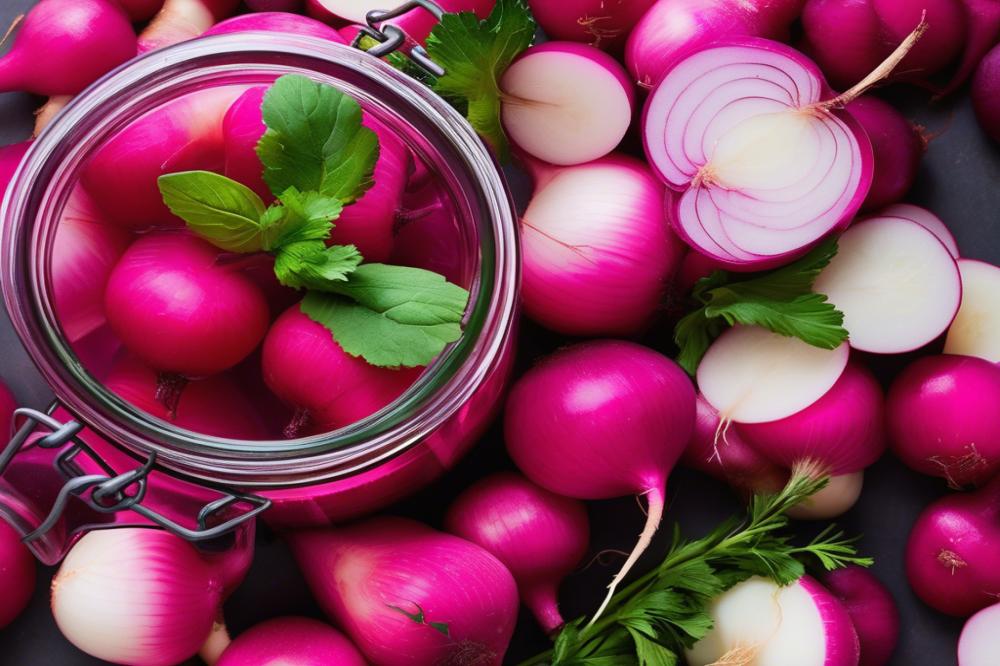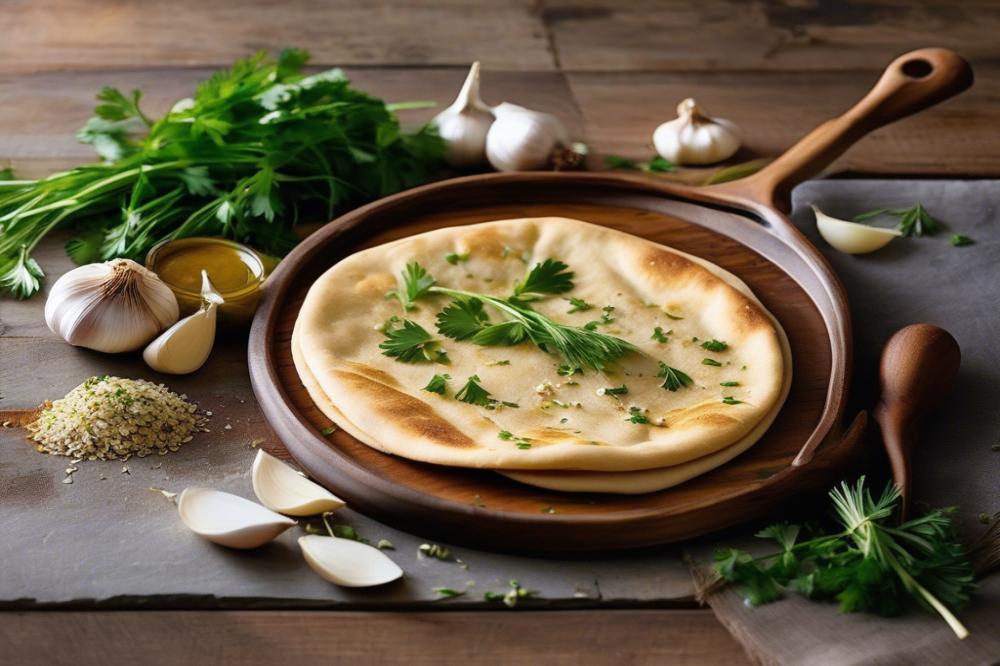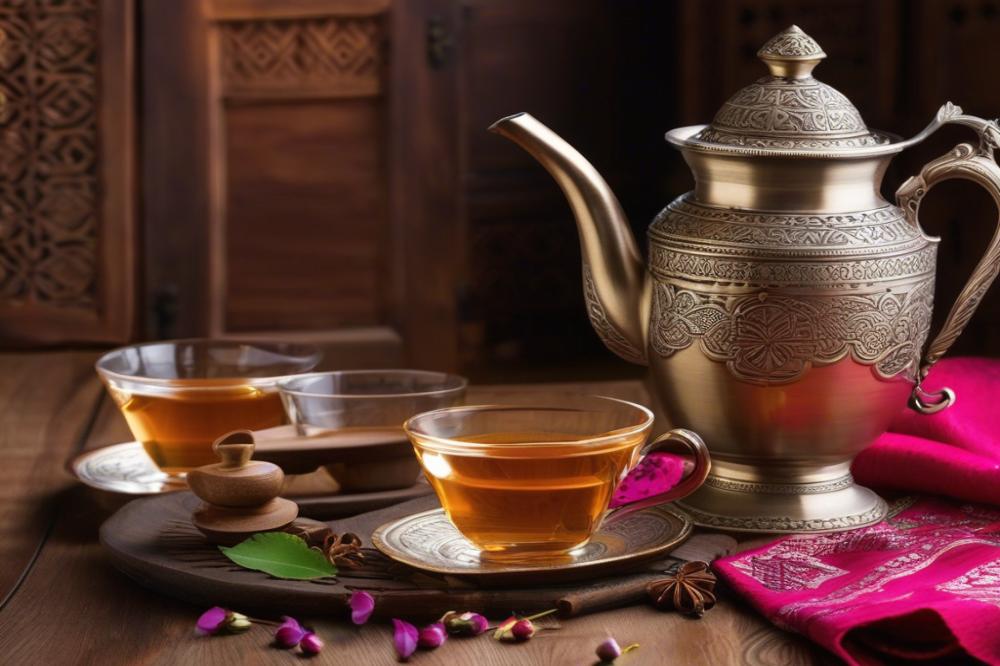Introduction
Lebanese cuisine offers a rich tapestry of flavors and textures that captivate the taste buds. It combines fresh ingredients with aromatic spices to create vibrant dishes. Notably, pickled vegetables hold a special place within the culinary traditions of the Middle East. They not only add a burst of flavor but also provide a delightful crunch to many meals.
Pickling and fermentation serve as key methods to preserve vegetables, enhancing their taste and longevity. Among the many varieties of pickles, one stands out in Lebanese dishes. Guests often find a small bowl of bright pink slices accompanying their meals, a staple side that has become immensely popular. This specific creation is made from turnips, garlic, vinegar, and sometimes a hint of spice, transforming simple ingredients into something special.
Lebanese Pickled turnips have grown to symbolize the vibrant nature of this cuisine. They can elevate a sandwich, complement a platter of mezze, or even serve as a tangy snack on their own. Learning the Pickling Recipe is an easy way to bring a taste of Lebanon into your kitchen. With their distinctive flavor and striking appearance, these turnips play an essential role in Middle Eastern pickles, showcasing how simple vegetables can be transformed through the art of pickling.
Lebanese Pickled Turnips: Ingredients and Method
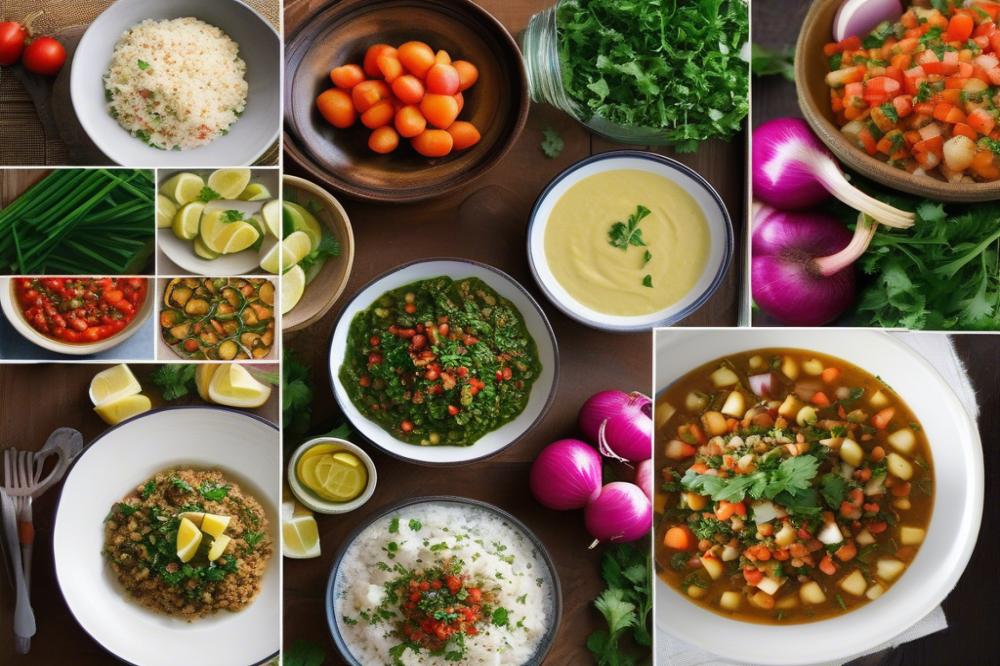
Ingredients List with Quantities
- Turnips: 1 kg
- Beetroot: 1 medium-sized (optional for color)
- Vinegar: 500 ml (white or apple cider vinegar)
- Salt: 3 tablespoons
- Water: 500 ml
- Garlic cloves: 3-4, peeled and smashed
- Chili pepper: 1-2 (optional, for spiciness)
Method of Preparation
Start by peeling the turnips. After peeling, cut them into sticks or rounds based on your preference. If using beetroot, prepare it the same way. It adds a lovely pink hue, enhancing the visual appeal of your dish.
Next, mix vinegar, water, salt, garlic, and any optional chili in a bowl. Stir well until the salt dissolves completely. The vinegar will create a tangy brine that flavors the vegetables wonderfully. If you like it spicy, chop the chili pepper finely and add it to the mixture.
Now, it’s time to pack the turnips into jars. Use clean glass jars that can hold all the vegetables snugly. Arrange the turnips in layers, ensuring they fit tightly. This helps with the pickling process.
Pour the prepared brine over the turnips. Fill the jars until the liquid covers the vegetables completely. Leave a little space at the top to allow for expansion during fermentation. Ensure all pieces are submerged; this will prevent spoilage.
Seal the jars tightly with lids. Place them in a cool, dark area to ferment. The fermentation process typically takes about one to two weeks. You can taste the pickles after a week to check if they’re to your liking. Enjoy this vibrant addition to Middle Eastern cuisine whenever you wish!
Nutritional Information
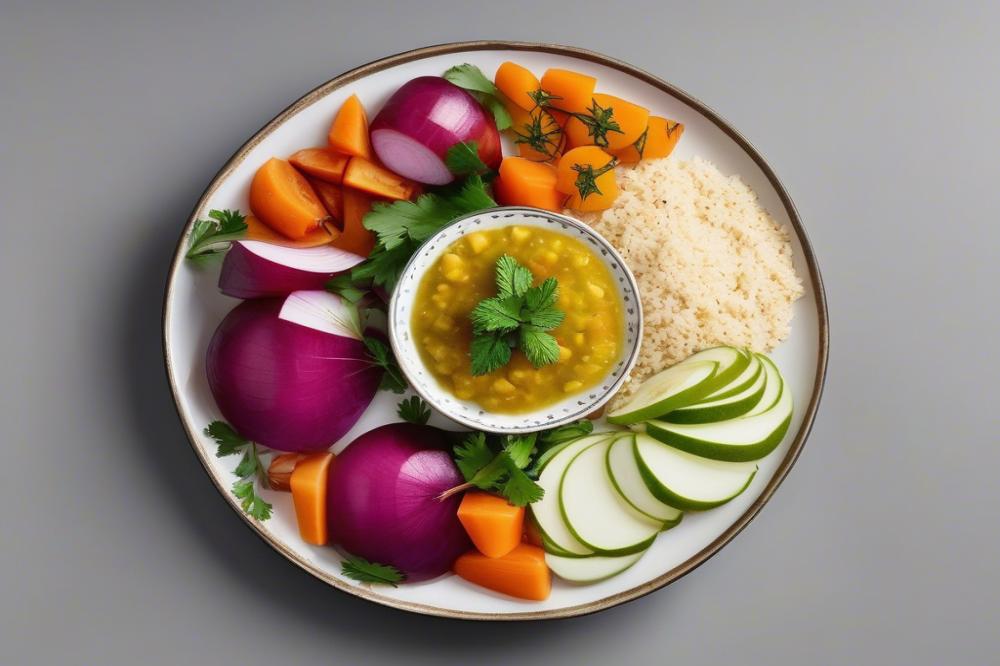
Turnips are an interesting vegetable that carries several health benefits. They are low in calories, making them a great option for those watching their weight. Most of the calories come from carbohydrates, yet they pack a punch of fiber that aids digestion. Including high-fiber foods like turnips in your diet can promote a healthy gut.
Vitamins stand out in turnips. These root vegetables are rich in vitamin C, which boosts the immune system. They also contain folate, a B vitamin that is crucial for cell function and tissue growth. Other minerals like potassium and calcium contribute to heart and bone health. All these nutrients make turnips a valuable addition to any meal.
Garlic deserves attention in this recipe as well. Known for its strong flavor, it also serves as a health booster. Studies show that garlic may help lower cholesterol and blood pressure. Its antioxidants can strengthen the immune system and combat illness. Adding garlic to pickling enhances both taste and health benefits.
Vinegar plays a significant role in this recipe, too. It is essential in the pickling process, giving the turnips their tangy flavor. Beyond taste, vinegar helps with digestion. Consuming vinegar may improve your gut health and even control blood sugar levels. The fermentation process that occurs through pickling further enhances these benefits, preserving the vegetables while adding probiotics.
The nutritional profile of these Middle Eastern pickles is commendable. They not only add color and crunch to meals but also bring a burst of health benefits. Overall, incorporating fermented foods like Lebanese Pickled Turnips into your diet can lead to a balance of nutrients and promote well-being.
The Art of Pickling and Fermentation
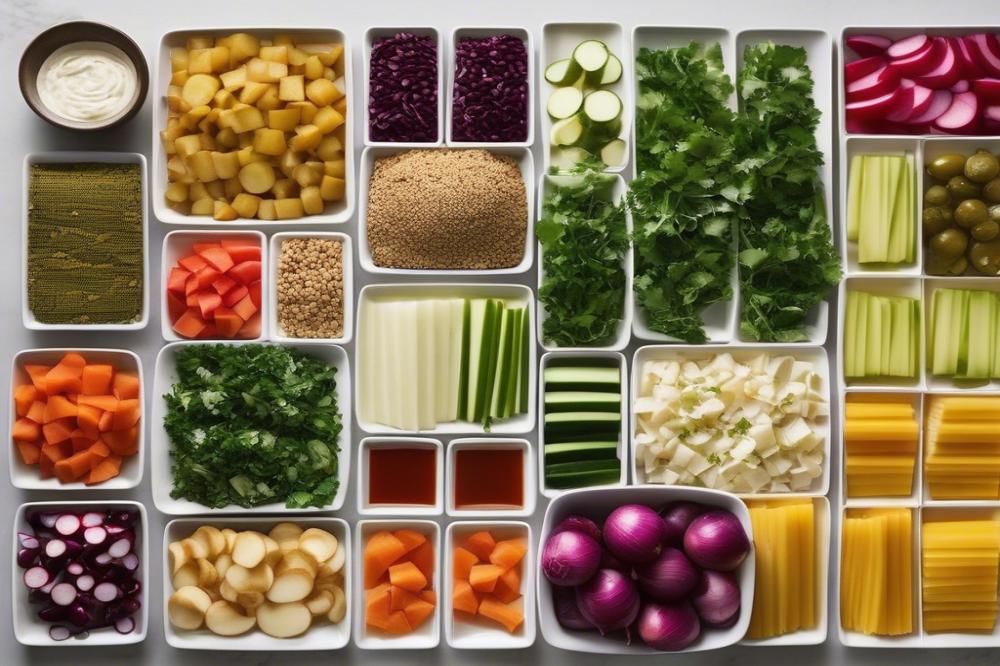
Overview of Pickling and Fermentation Processes
Pickling and fermentation are time-honored food preservation methods. Both processes involve the transformation of fresh produce into flavorful delights. Pickling usually uses vinegar, salt, and spices to preserve vegetables. This method creates a tangy taste. Fermentation, on the other hand, relies on bacteria to break down the vegetables’ sugars. This process adds complexity and depth to the flavors. Each technique enhances the food’s shelf life, keeping it safe to eat for longer periods.
Historical Context of Pickling in Lebanese cuisine
In Lebanese cuisine, pickling has a rich history. It dates back centuries, with traditions passed down through generations. Families would often pickle seasonal vegetables to enjoy throughout the year. Turnips, cucumbers, and carrots are commonly used. These Middle Eastern pickles accompany many dishes, offering a crisp and refreshing bite. The vibrant colors and unique flavors on a table reflect the heart of Lebanese home cooking.
Differences Between Pickling and Fermentation
While both methods preserve food, their processes are quite distinct. Pickling often aims for a sharp, tart flavor profile. Conversely, fermentation develops a sour taste with a depth that varies based on how long the vegetables age. Pickles are typically ready to eat right after production, while fermented vegetables may need weeks to develop their flavors. Each process attracts various fans and serves different culinary purposes.
Benefits of Pickled Vegetables in the Diet
Including pickled vegetables in your diet can offer numerous advantages. They provide essential nutrients and probiotics, which are great for gut health. Many enjoy their crunchy texture and bold tastes, making meals more exciting. Pickled foods can also enhance digestion and help maintain a balanced diet. Incorporating them into daily meals can create diverse flavors and textures that keep dining interesting.
How Lebanese Pickled Turnips Fit into This Tradition
Lebanese pickled turnips are a prime example of this culinary art. They combine the sharpness of vinegar with the warmth of garlic and a hint of spice. Served as a side dish or condiment, they complement many meals beautifully. These vibrant pink-tinted turnips add color and crunch to a plate, enhancing the overall dining experience. Much like the broader tradition of pickling in Lebanese cuisine, they reflect the clever use of local ingredients and time-honored techniques. Their presence on a table connects people to their heritage and culture, marking social gatherings with joy and flavor.
Serving and Pairing Suggestions
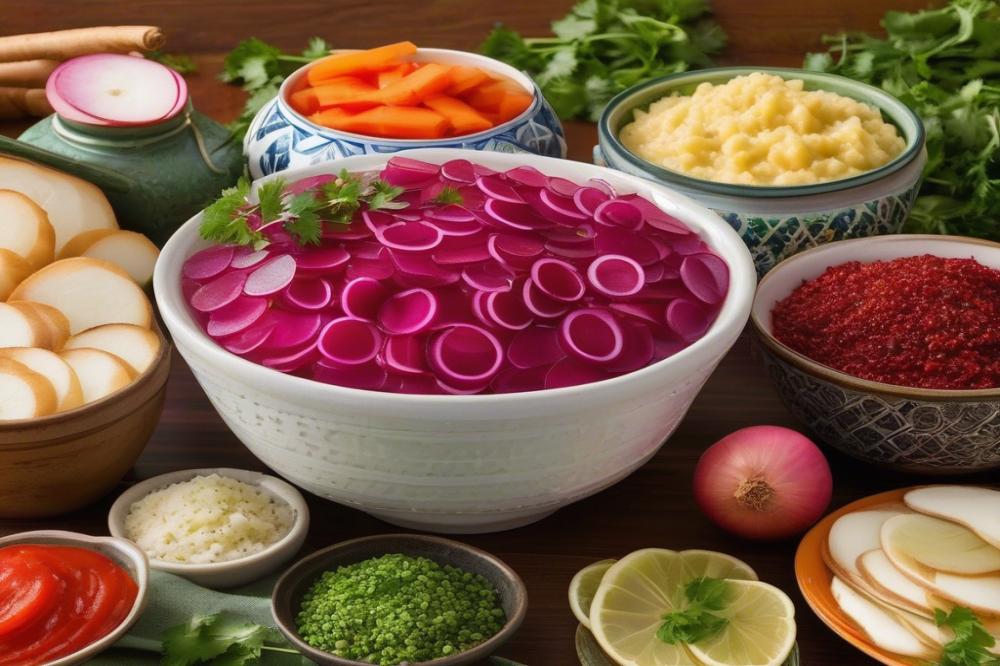
Ways to Serve Lebanese Pickled Turnips
Serving these tangy delights can elevate any meal. Often, they are placed on the table alongside various dishes. Use them as a condiment to add a sharp flavor. Furthermore, their vibrant pink color adds a visual appeal. Enjoy them as a refreshing side, balancing out richer foods. They can also be served straight from the jar for a quick snack.
Pairing with Traditional Lebanese Dishes
Pairing these pickled turnips with traditional Lebanese cuisine creates a wonderful balance. Try them alongside falafel or shawarma for a delightful contrast. The spicy flavors of the turnips cut through the richness of the meat. Additionally, they complement the soft texture of hummus and baba ghanoush. This unique pairing not only enhances the flavors but also adds a crunch to each bite.
Incorporating into Middle Eastern Meals
Middle Eastern meals often celebrate bold flavors, and pickled vegetables contribute significantly. Incorporate turnips into rice dishes or grain bowls. They can also be added to wraps, providing a zesty kick. Another great option involves layering them in pitas, ensuring they complement grilled meats. Their fermented taste enhances the overall experience of the meal.
Creative Uses in Salads and Sandwiches
When looking for a way to spice up salads, consider adding pickled turnips. They can transform a simple green salad into something vibrant. Combine the turnips with fresh cucumbers and tomatoes for a refreshing summer dish. In sandwiches, their tangy nature can enhance flavor levels. A sandwich filled with creamy spread, crunchy vegetables, and these pickles becomes extraordinary.
Balancing Flavors with Other Vegetables and Proteins
Choose other vegetables wisely to balance the flavor profiles. Roasted beets, for example, pair beautifully with pickled turnips, creating a stunning contrast. Adding proteins like grilled chicken or lamb can create a satisfying meal. The tartness of the turnips lightens heavier dishes, creating a harmony on the plate. Mixing flavors and textures makes eating exciting and enjoyable.
The Final Word on Lebanese Pickled Turnips
These vibrant pink pickled turnips hold a special place in Lebanese cuisine. Their tangy flavor and crunchy texture enhance a wide variety of dishes. Often served alongside falafel or shawarma, they add a refreshing contrast. Many families treasure recipes passed down through generations. The process of making them creates not only delicious food but also cherished memories.
Trying the recipe for this delightful condiment can be rewarding. Experimenting with spices or the amount of garlic can lead to surprising new tastes. Feel free to adjust the brine to meet your preferences. This flexibility lets you put a personal twist on a classic. Homemade pickles often taste better than store-bought versions, as they carry your unique touch.
Engaging in the art of pickling can be a fulfilling experience. Watching the vibrant colors transform during the process is truly satisfying. Homemade versions allow everyone to savor their favorite flavors. So why not take a chance? You might discover a new dish that becomes a staple at your table.
Embrace the joy of crafting your own pickled vegetables. Each jar reflects your effort and creativity. Sharing these with friends or family can turn meals into special occasions. Enjoy the journey from the kitchen to your plate, and remember, each bite is a celebration of flavor.

